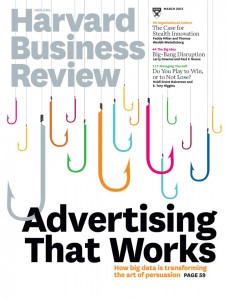by Larry Downes and Geoffrey A. Manne
Now that the election is over, the Federal Communications Commission is returning to the important but painfully slow business of updating its spectrum management policies for the 21st century. That includes a process the agency started in September to formalize its dangerously unstructured role in reviewing mergers and other large transactions in the communications industry.
This followed growing concern about “mission creep” at the FCC, which, in deals such as those between Comcast and NBCUniversal, AT&T and T-Mobile USA, and Verizon Wireless and SpectrumCo, has repeatedly been caught with its thumb on the scales of what is supposed to be a balance between private markets and what the Communications Act refers to as the “public interest.”
Commission reviews of private transactions are only growing more common—and more problematic. The mobile revolution is severely testing the FCC’s increasingly anachronistic approach to assigning licenses for radio frequencies in the first place, putting pressure on carriers to use mergers and other secondary market deals to obtain the bandwidth needed to satisfy exploding customer demand.
While the Department of Justice reviews these transactions under antitrust law, the FCC has the final say on the transfer of any and all spectrum licenses. Increasingly, the agency is using that limited authority to restructure communications markets, beltway-style, elevating the appearance of increased competition over the substance of an increasingly dynamic, consumer-driven mobile market.
Given the very different speeds at which Silicon Valley and Washington operate, the expanding scope of FCC intervention is increasingly doing more harm than good.
Deteriorating Track Record
We’re trapped in a vicious cycle: the commission’s mismanagement of the public airwaves is creating more opportunities for the agency to insert itself into the internet ecosystem, largely to fix problems caused by the FCC in the first place. That is happening despite the fact that Congress clearly and precisely circumscribed the agency’s authority here, a key reason the internet has blossomed while heavily regulated over-the-air broadcasting and wireline telephone fade into history.
Desperate for continued relevance, the FCC can’t resist the temptation to tinker with one of the only segments of the economy that is still growing and investing. The agency, for example, fretted over Comcast’s merger with NBCUniversal for 10 months, approving it only after imposing a 30-page list of conditions, including details about which channels had to be offered in which cable packages.
Regulating-by-merger-condition has become a popular sport at the FCC, one with dangerous consequences. While it conveniently allows the agency to get around the problem of intervening where it has no authority, the result is a regulatory crazy quilt with different rules applying to different companies in different markets. Consumers, the supposed beneficiaries of this micromanagement, cannot be expected to understand the resulting chaos.
For example, Comcast also agreed to abide by an enhanced set of “net neutrality” rules even if, as appears likely, a federal appeals court throws out the FCC’s 2010 industry-wide rulemaking for exceeding the agency’s jurisdiction. As with all voluntary concessions, Comcast’s acquiescence isn’t reviewable in court.
The FCC made an even bigger hash in its review of AT&T’s proposed merger with T-Mobile. Once it became clear that the FCC was bowing to political pressure to reject the deal, the companies pulled their applications for license transfers to focus on winning over the Department of Justice first. But FCC Chairman Julius Genachowski, determined to have his say, simply released an uncirculated draft of the agency’s analysis of the deal anyway.
The report found that the combination, as initially proposed, would control too much spectrum in too many local markets. But that was only after the formula, known as the “spectrum screen,” was manipulated to reduce substantially the amount of frequency included in the denominator. Hidden in a footnote, the report noted cryptically that the reduction was being made (and explained) in an unrelated order yet to be published.
When the other order was released months later, however, it made no mention of the change. It never actually happened. With the T-Mobile deal off the table, apparently, the chairman found it more expedient to leave the screen as it was, at least until further gerrymandering proved useful. Unwittingly, Genachowski had exposed his hand in rigging a supposedly objective test applied by a supposedly independent agency.
Leave it to the Experts
This amateurish behavior, unfortunately, is increasingly the norm at the FCC. Politics aside, part of the problem is that while federal antitrust regulators enforce statutes under a long line of interpretive case law, the FCC’s review of license transfers is governed by an undefined and largely untested public interest standard.
Now the commission is asking interested parties how, if at all, it needs to formalize its transaction review process, particularly the spectrum screen calculation it blatantly manipulated in the AT&T/T-Mobile review. It’s even asking whether it should re-impose a rigid cap on the amount of spectrum any one carrier can license, a bludgeon of a regulatory tool the agency wisely abandoned in 2003.
We have a better idea. Do away with easily forged formulae and proxies with no scientific relevance. Instead, review transactions in the broader context of a dynamic broadband ecosystem that is disciplined not only by inter-carrier competition, but increasingly by device makers, operating system providers, app makers and ultimately by consumers.
Every user with an iPhone 5 knows perfectly well how complex and competitive the mobile marketplace has become. It’s now time for the government to abandon its 19th century toolkit and look at actual data—data that the FCC already collects and dutifully reports, then ignores when political expediency beckons.
Thanks to the FCC’s endemic misadventures in spectrum management, we can expect more, not fewer, mergers—necessitating more, not fewer, commission reviews. Rather than expanding the agency’s unstructured approach to transaction reviews, we should be reining it in. As the FCC embarks on its analysis of T-Mobile’s takeover of MetroPCS and Sprint’s acquisition by SoftBank, it’s time to put an end to dangerous mission creep at the FCC.
That, at least, would better serve the public interest.
(Reprinted, with permission, from Bloomberg BNA Daily Report for Executives, Dec. 6, 2012. Our recent paper on FCC transaction review can be found at http://papers.ssrn.com/sol3/papers.cfm?abstract_id=2163169.)
 Last month, Paul F. Nunes and I hosted an audio webinar for Harvard Business Review on “Big Bang Disruption,” our article from the March, 2013 issue of the magazine. An archive of the webinar has now been posted, including the PowerPoint slides.
Last month, Paul F. Nunes and I hosted an audio webinar for Harvard Business Review on “Big Bang Disruption,” our article from the March, 2013 issue of the magazine. An archive of the webinar has now been posted, including the PowerPoint slides.


